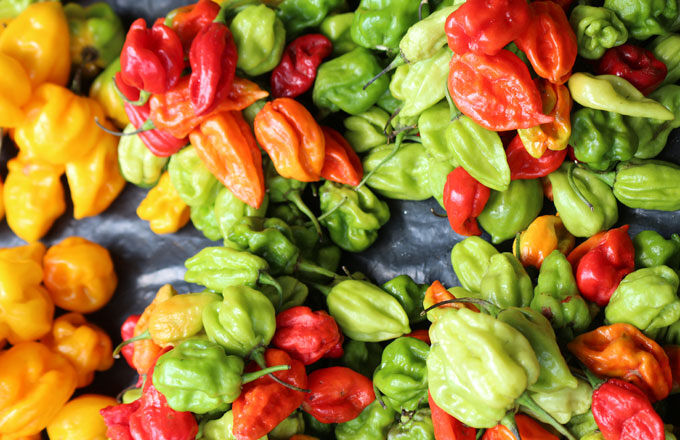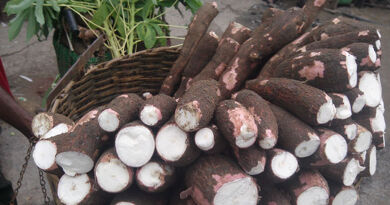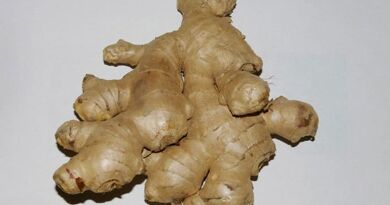Chilli pepper
Many varieties exist in our islands and bear very colorful names. Judge for yourself: “Bonda-à-man-Jacques pepper”, “Cabresse pepper”, “Caribbean pepper,” Cherry pepper “,” Rabid pepper “,” Zozio pepper “(bird),” Indian pepper “, etc.
Note that almost all forms of peppers belong to two species Capsicum frutescens L.: Small, elongated or round fruits, erect (type “Piment-z’oiseau”). Capsicum sinense Jacques: long confused with the previous one, with larger fruits, of the “lantern” type, bent or hanging.
Peppers have been known for a long time in Martinique. The Caribbean and the first French colonists made a strong consumption of it: “The Chili, Indian pepper, or Brazilian pepper, that the arborists call Capsicum, has always been the main grocery store, both for the Indians (Caribbean) and for French inhabitants. »(R.P. Du Tertre). The Caribbean, it seems, put them in full handles in all their sauces, to the point that it was very difficult for the colonist of the time to taste their cuisine.
They also used the Chili to cure the fever and this in an original way: “They take small round pepper, which is the strongest and the most hot of all, and after having rubbed a net of it, they open by force with the patient’s fingers, eyes, and pass this trickle over his apple several times … ”(RP Du Tertre).
We do not know the effectiveness of this treatment, but the pain was certainly so severe that the patient had to forget his fever! Today, Chili is no longer used for fever, but it is certainly the most used spice in Martinique. We put it in all the sauces, to which it gives a lot of taste. Some believe that it stimulates the appetite.
The peppers, dried and ground, give cayenne pepper; dried in the sun and in the oven, they are the chillies which are the subject of an important manufacture in Japan and in certain English Antilles.




